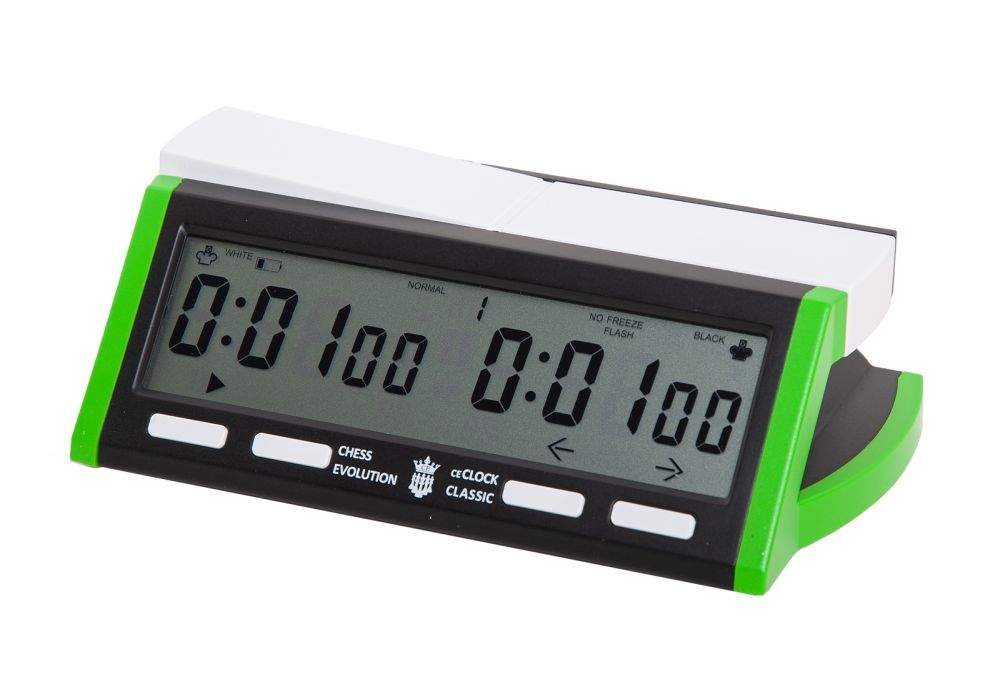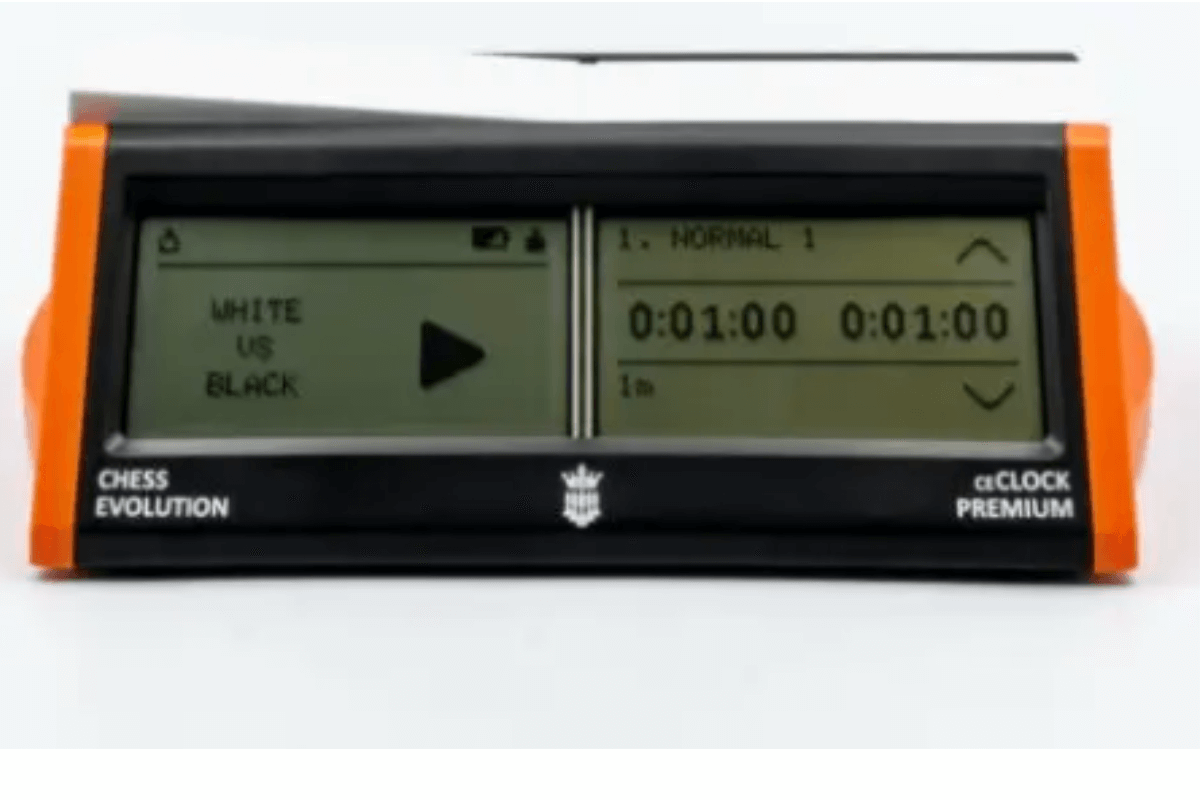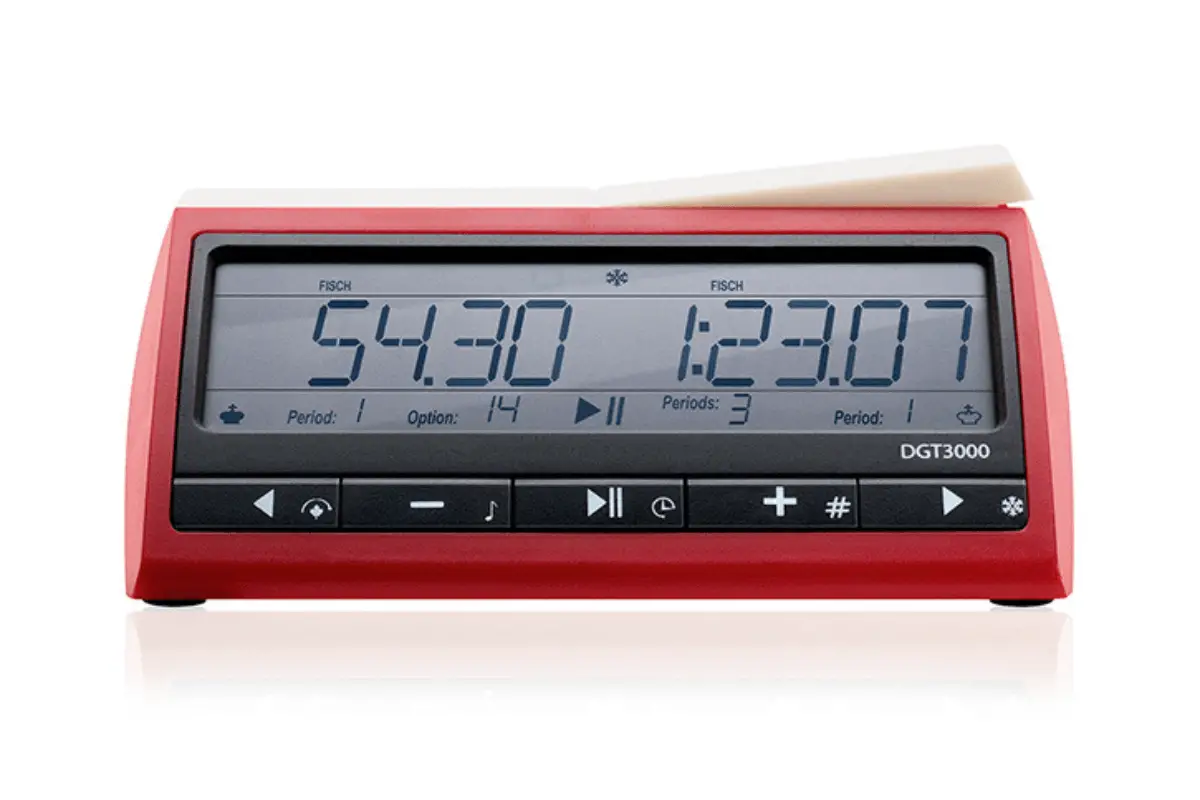In 1843, a notorious chess match between Howard Staunton and Pierre St. Amant lasted for 14 hours. This was in the first half of the 19th century, when stalling time and attempting to overtire each other were part of your chess opponent’s tactics.
It wasn’t until the 1880s that the first chess clocks were designed. They consisted of two adjacent clocks that timed each opponent’s turn. Chess clocks were especially useful in competitions and tournaments.
Today, FIDE-approved chess clocks are standard in prestigious chess tournaments. Read on to learn more about them.
What Is a FIDE-Approved Chess Clock?
The International Chess Federation (FIDE) requires the use of approved chess clocks in particular tournaments. This is to ensure that the chess equipment is standardized. With standardized equipment, the players are assured that the games are fair.
1. Analog Chess Clocks
An analog or mechanical chess clock shows the classic circular clock that divides time through the hour, minute, and second hands.
Approved analog chess clocks work silently and are not reflective. They also have a signaling device (“flag”) that displays the hours in an exact, clear, and conspicuous manner.
2. Digital Chess Clocks
A digital or electronic chess clock shows the time through precise numerals or symbols.
Unlike analog chess clocks, digital ones have features such as a time bonus, time increments, time delays, and more.
What Are the Requirements for a FIDE-Approved Chess Clock?
There are several FIDE requirements for chess clocks:
- Chess clocks have two adjacent clocks representing each opponent. In matches with an increment mode time control, one clock stops running when the other clock reaches zero. In Rapid and Blitz, the delayed clock keeps on running until it also reaches zero.
- The flag that falls down first must be clearly visible.
- The chess clocks should work according to FIDE’s chess laws.
- The chess clock display should show the total time available for a player’s next move.
- The display should be readable from as far as 3 meters (9.84 feet).
- A player should be able to tell which of the two clocks is running from as far as 10 meters (32.8 feet).
- The display must show which player passed the time control first. The time control determines the time each player has to finish a move, a round, or a game.
- The chess clock must have a low-battery indicator.
- The announcement of passing time controls should be correct.
- The chess clock should stop adding time when a player passes the last time control in matches with accumulative or delay timing systems.
- The arbiter should be able to operate the chess clock correctly within 60 seconds if there are time penalties.
- The display’s data shouldn’t be easy to manipulate.
- The chess clocks should include a short user manual.
- Official time controls should be stated during the testing of the chess clocks.
- The electronic chess clocks must have an endorsement from the FIDE Technical Commission.
FIDE-Approved Chess Clock Models
Here are different models of FIDE-Approved chess clocks through the years:
1. CE Classic Clock

The CE Classic Clock from Chess Evolution is a user-friendly digital chess clock endorsed by the FIDE Technical Commission in 2017. It weighs 0.35 kg (0.77 lbs), has good screen visibility, plus a handy wireless live transmission function.
Official FIDE time controls are already pre-programmed. You can also change the settings manually and set up your own time controls.
It has two batteries and can work for 500+ hours.
2. CE Premium Clock

The CE Premium Clock, with a touchscreen feature, is an upgraded version of the CE Classic Clock. Weighing 0.48 kg (1.05 lbs), it’s designed to have a wide and stable grip on the chess table.
It has a Chess Evolution Software that enables several functions such as:
- Player names can be displayed on the screen.
- Time controls can be easily set up from a computer.
- The clock’s and the computer’s timers can be started simultaneously.
It has an accumulator which automatically charges during live transmissions. In standard usage, a single charge has 250+ working hours with a charging time of 2.5 hours.
3. DGT 2010

The DGT 2010, from Digital Game Technology, was endorsed in the same year it was released. It has a total of 22 pre-programmed time controls. You can also manually set up your own timing options.
The electronic chess clock works for many chess games, such as Classical, Blitz, and Rapid matches. What’s more, it can also be used in other two-player board games like draughts, go, Scrabble, shogi, and more.
4. DGT 3000

Another one from Digital Game Technology, the DGT 3000 is the company’s most advanced timer. It was launched in 2014, featuring a bigger display that can show more information.
It has 24 pre-programmed time controls and five slots for manual timing options. The timing methods can be delay, bonus, and more.
As with the DGT 2010, you can use it to play other two-player board games, as well as connect it with all the DGT e-Boards.
5. DGT XL

Digital Game Technology stopped producing the DGT XL when it was replaced by the DGT 3000 in 2014. Nevertheless, it was one of DGT’s first FIDE-approved clocks.
It has a large display that can show messages from other players. It also has five slots for user-defined settings and can combine different timing systems.
Just like the others, it can connect with DGT’s e-Boards for offline and online computer play.
Conclusion
Due to the lack of time restrictions, chess used to be a tedious and time-consuming game for its players. With the invention of chess clocks, players were finally able to participate in fair competitions.
The FIDE-approved chess clock is standard in renowned FIDE continental and worldwide chess tournaments. For a chess clock to be endorsed and approved, it needs to follow a certain set of requirements.
Because of this, you can be sure you’re using a high-quality timer that has undergone rigorous examination when using a FIDE-approved chess clock.


